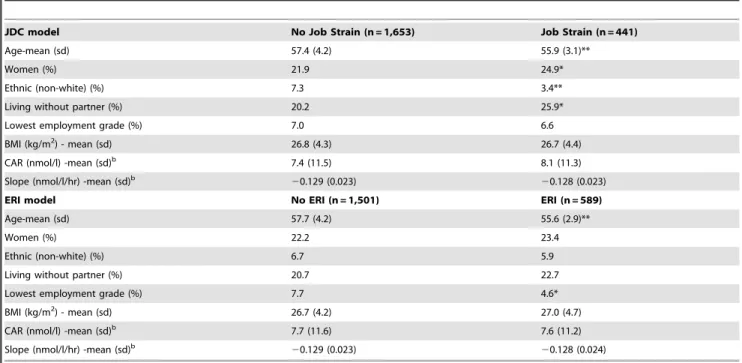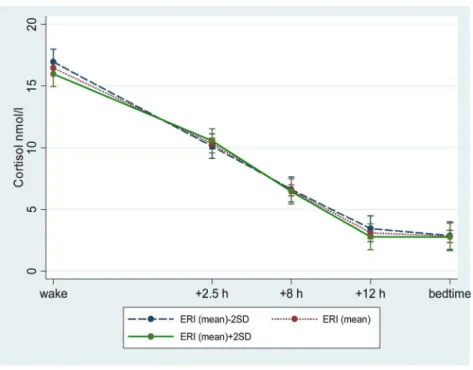Is there an association between work stress and diurnal cortisol patterns? Findings from the Whitehall II study.
Texto
Imagem




Documentos relacionados
Conclusion: there is an association between the voice disorder and the dimensions for current work ability compared with the best of lifetime, indicating that subjects who had a
The aim of this study was to evaluate the contributions of the combined models of analy- sis of psychosocial work stress and its association with common mental disorders (CMD)
In the association between the guidance on disposal, age, gender, skin color, education, marital status, occupational sta- tus, type of diabetes and time of diagnosis variables
A multiple linear regression model was fitted to assess the association between each outcome (serum albumin levels, serum sodium levels, and the need for albumin solution infusion)
Data were analyzed using multiple linear regression models, with the SGRQ activity and psychosocial impact scores as outcome variables, and 10 explanatory variables (age,
Logistic regression techniques were used to investigate the association between average incidence of sick leave > 5.0% over the period and the variables sex, position, age, time
Regarding the question: “ Unfortunately, it’s not clear the association between waiting time and patient acuity with patient satisfaction in the current study… there is a
Objective: To estimate the prevalence of abdominal obesity and verify the association with sociodemographic factors (gender, school shift, ethnicity, age, maternal education and